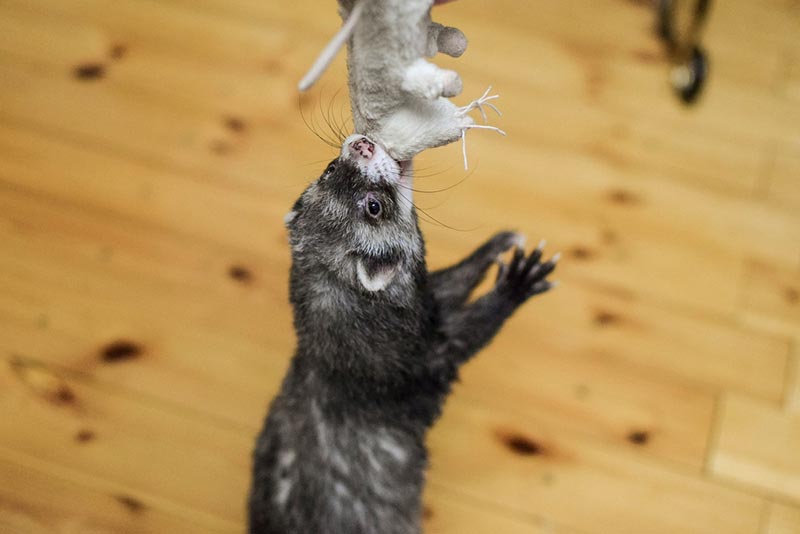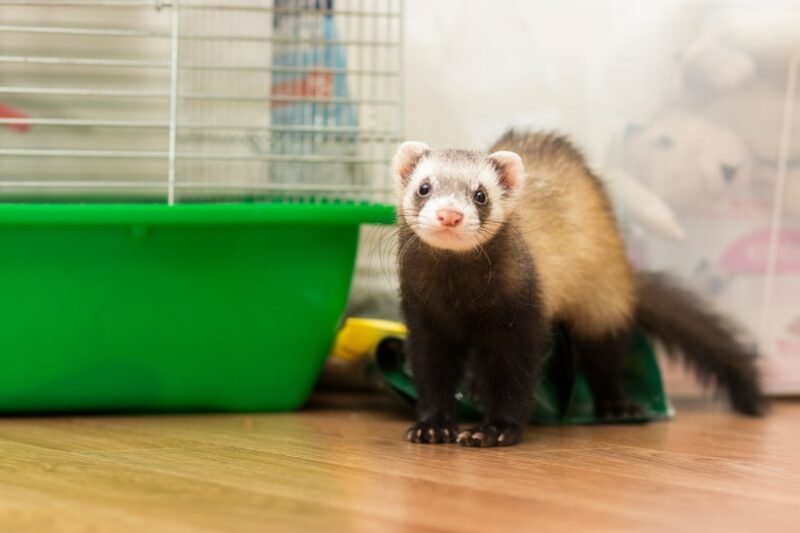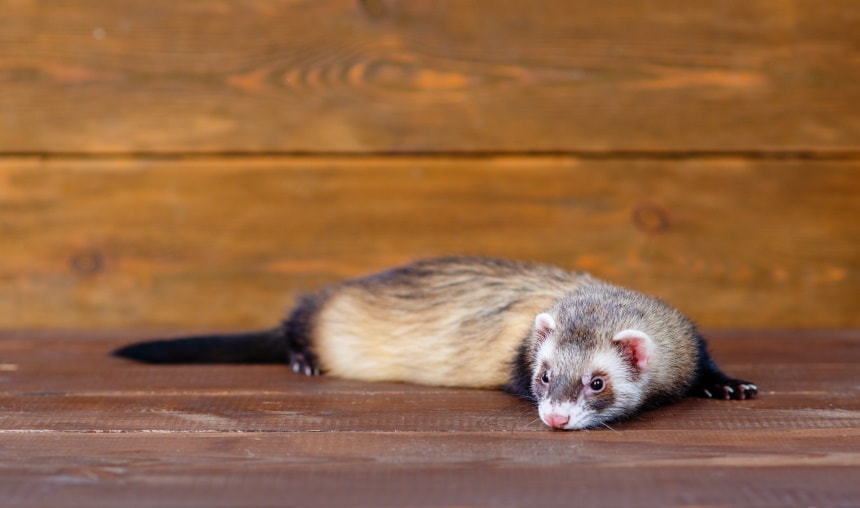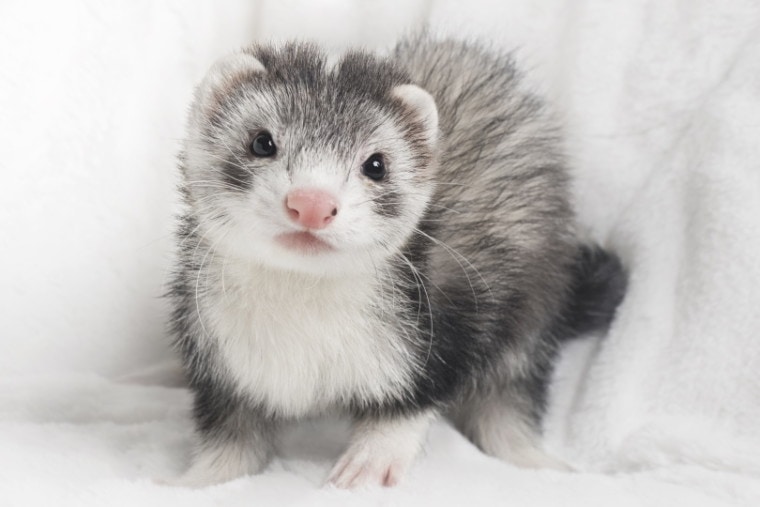
If you’ve ever seen a domestic ferret in a pet store, it was probably a brown sable color. This is the most common color variety in ferrets. However, there is a wide variety of colors and markings to be found within the breed. In this article, we will discuss the blaze pattern, which is just one color variation of the standard ferret.
Domestic Ferret vs Polecat vs North American Black-Footed Ferret
Though ferrets are sometimes called different names such as Angora or European ferrets, they are actually just one species, Mustela furo. However, the standard domestic ferret is sometimes confused with two other species: the polecat and the North American black-footed ferret. While all three species are members of the weasel family, they are distinct animals. Below, we will describe the similarities and differences between these animals in greater detail.
Domestic Ferret
Domestic ferrets are thought to be the descendants of the European polecat. These animals were first domesticated over 2,000 years ago for the purpose of hunting small animals such as rodents and rabbits. Today, none of these ferrets naturally occur in the wild. Although they come in many different colors, all domestic ferrets are born white. They only start to develop their color after about 3 weeks.
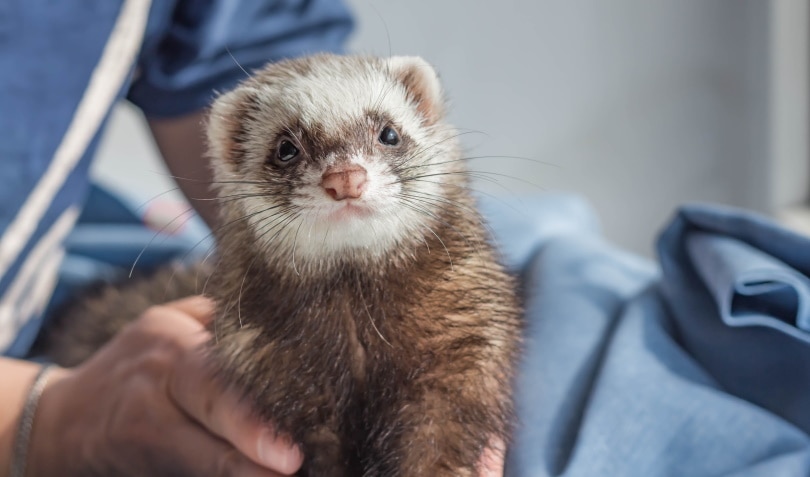
Polecat
The polecat is a generic name that refers to several different species, including the European polecat and the Steppe polecat. The term is sometimes used to refer to the North American black-footed ferret, though it is important to understand that they are not the same animal. Polecats tend to have leaner bodies and larger heads than ferrets. They also often have dark fur on their faces and paws.
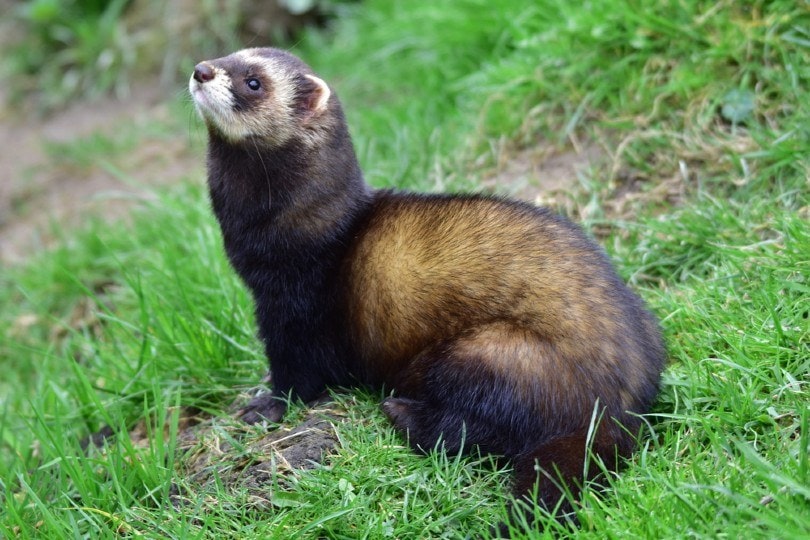
North American Black-Footed Ferret
Unlike the domestic ferret, the North American black-footed ferret is a ferret species that can still be found in the wild. As its name suggests, this creature is native to the North American grasslands. With only about 400 of these animals in the wild, the North American black-footed ferret is considered to be endangered. Thanks to conservation efforts, they are slowly making a comeback.
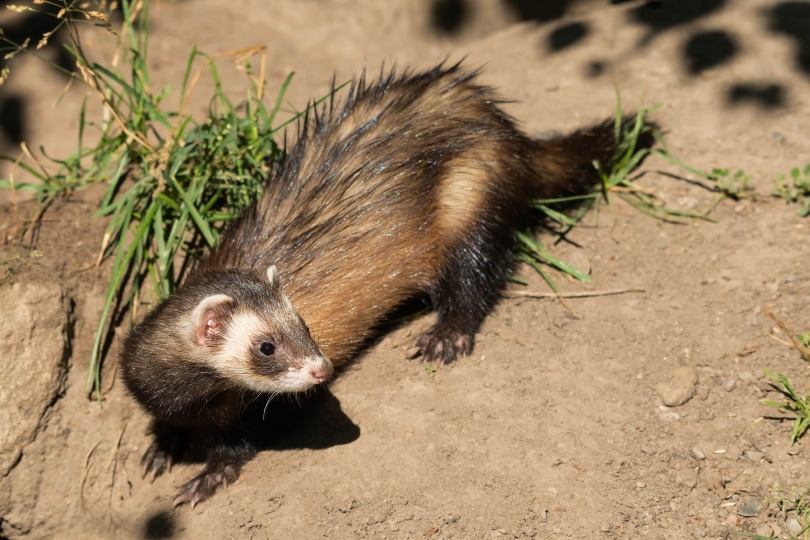
Blaze Ferret Color Markings
The blaze ferret’s body can come in any color other than white: black, cinnamon, champagne, sable, black sable, or chocolate. It’s called a blaze pattern because of the line of white fur that runs from the ferret’s head down its neck and to its tail, distinct against the rest of its fur. In addition to the white stripe on their back, these animals also tend to have white fur on their chest and sometimes on their paws. They often have rings around their eyes as well.
Unfortunately, these animals are often deaf due to a condition known as Waardenburg syndrome. This syndrome, which also causes changes in skin, hair, and eye pigmentation in humans, is usually responsible for the characteristic white stripe of the blaze ferret. Because this condition is fairly common in ferrets, it is not difficult to find one of these animals with “blaze” markings.

Final Thoughts
The blaze ferret’s markings look unique, but while you may need to look beyond your local pet store to find one, they are fairly common. Be aware that blaze ferrets are likely to be deaf due to Waardenburg syndrome. If you think your ferret may be deaf or partially deaf, take it to your vet for testing.
See also:
- Do Ferrets Get Along With Hamsters? Everything You Need to Know!
- Why Are Ferrets Illegal In California?
Featured Image Credit: Stephanie’screativeImages, Shutterstock



